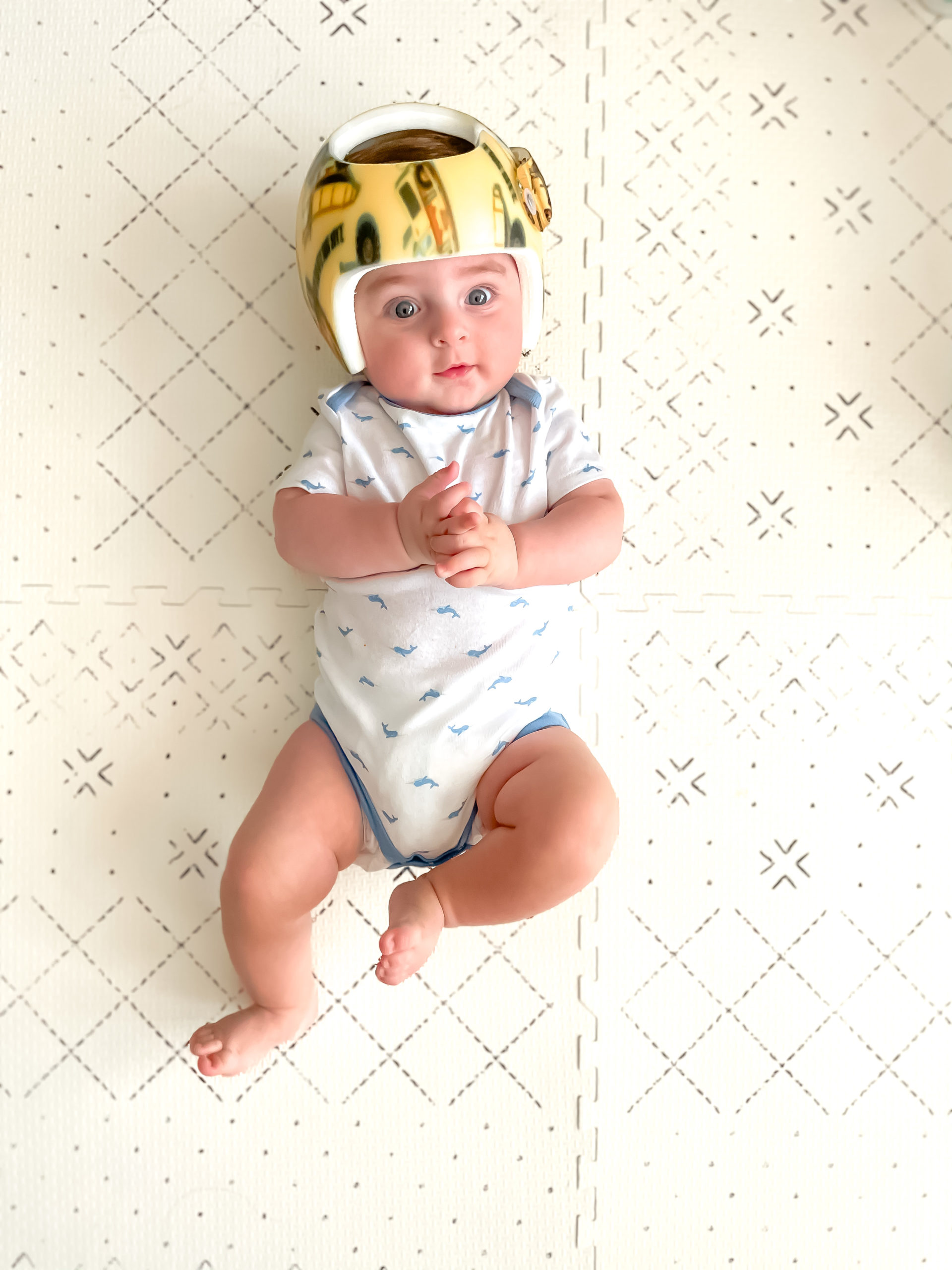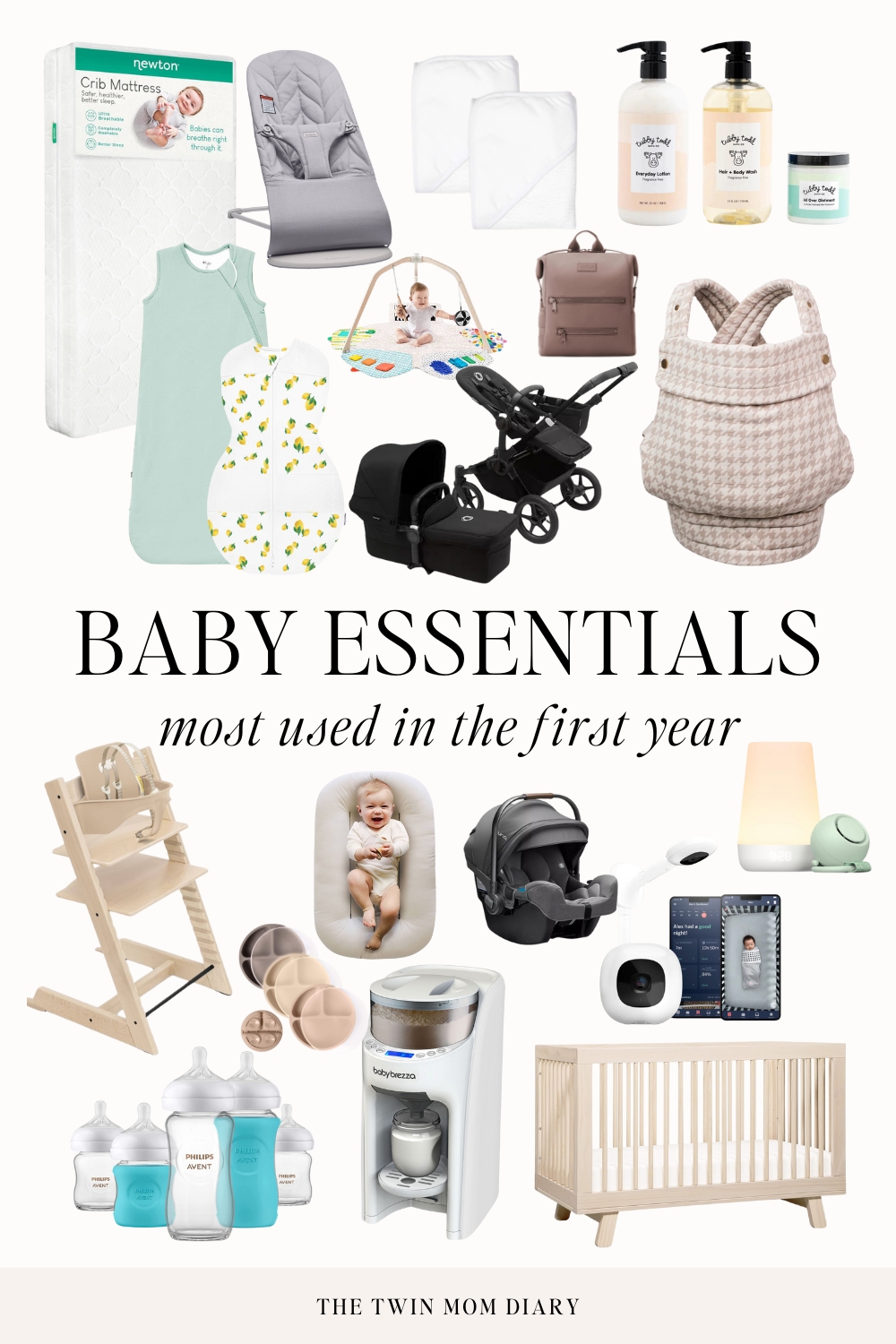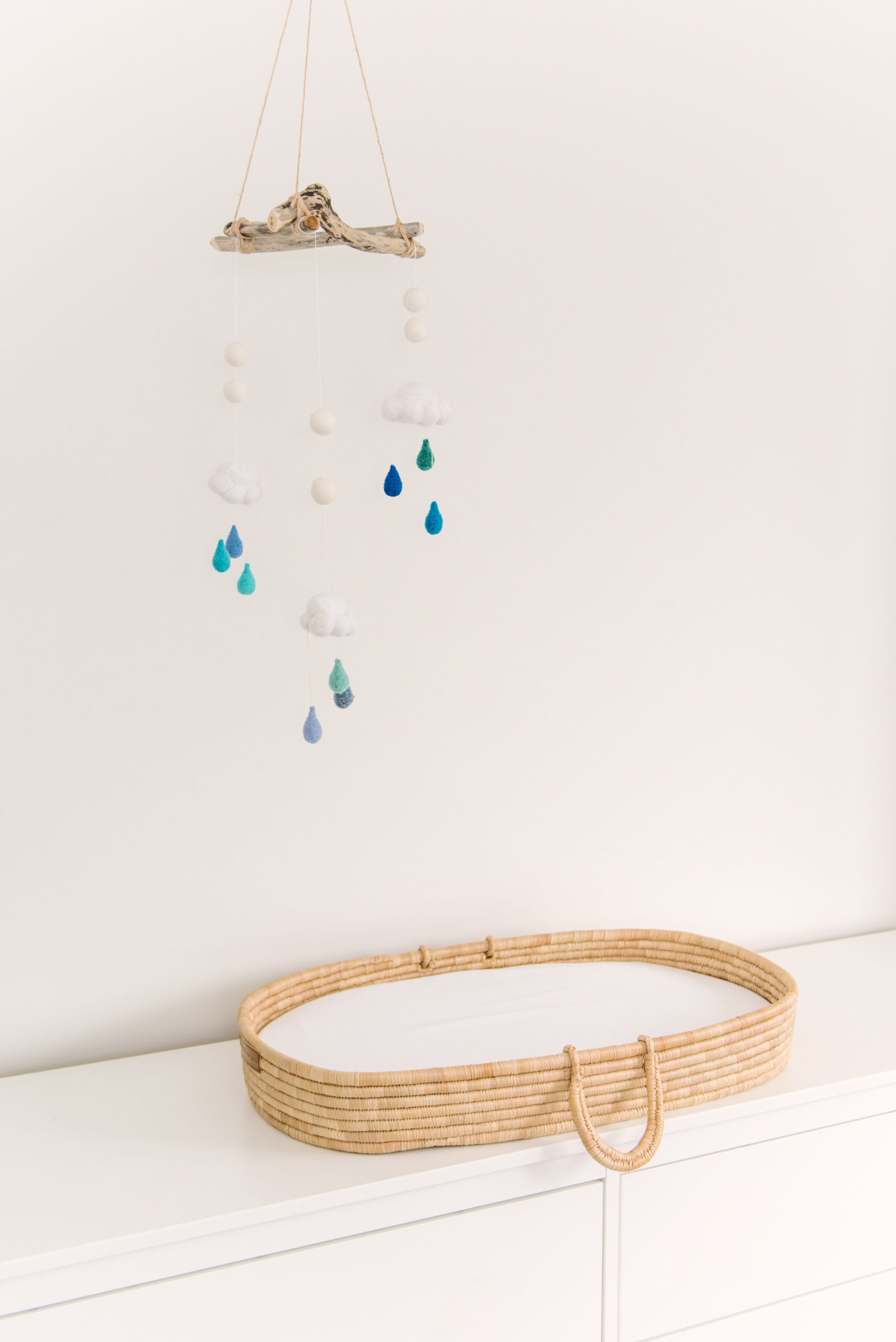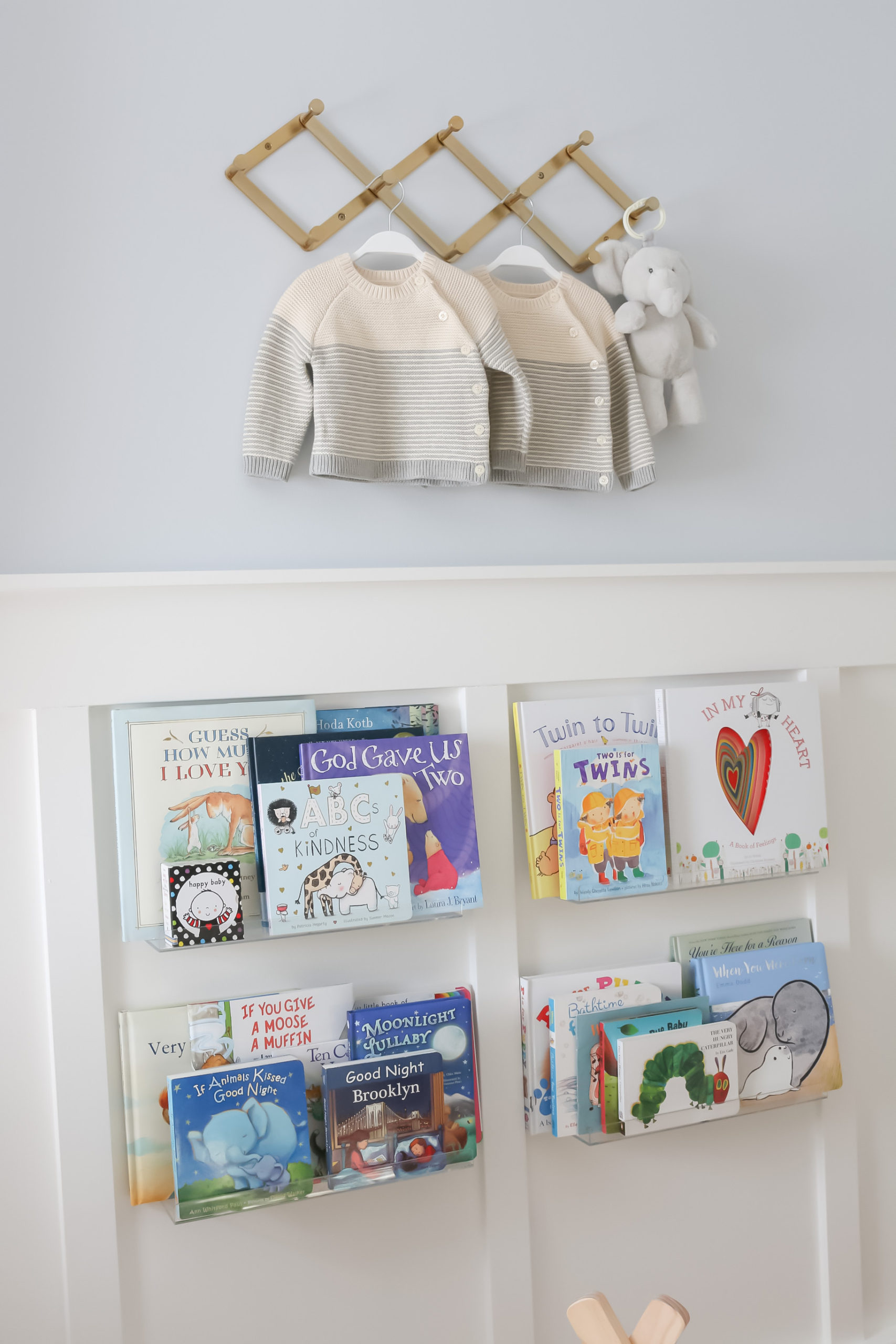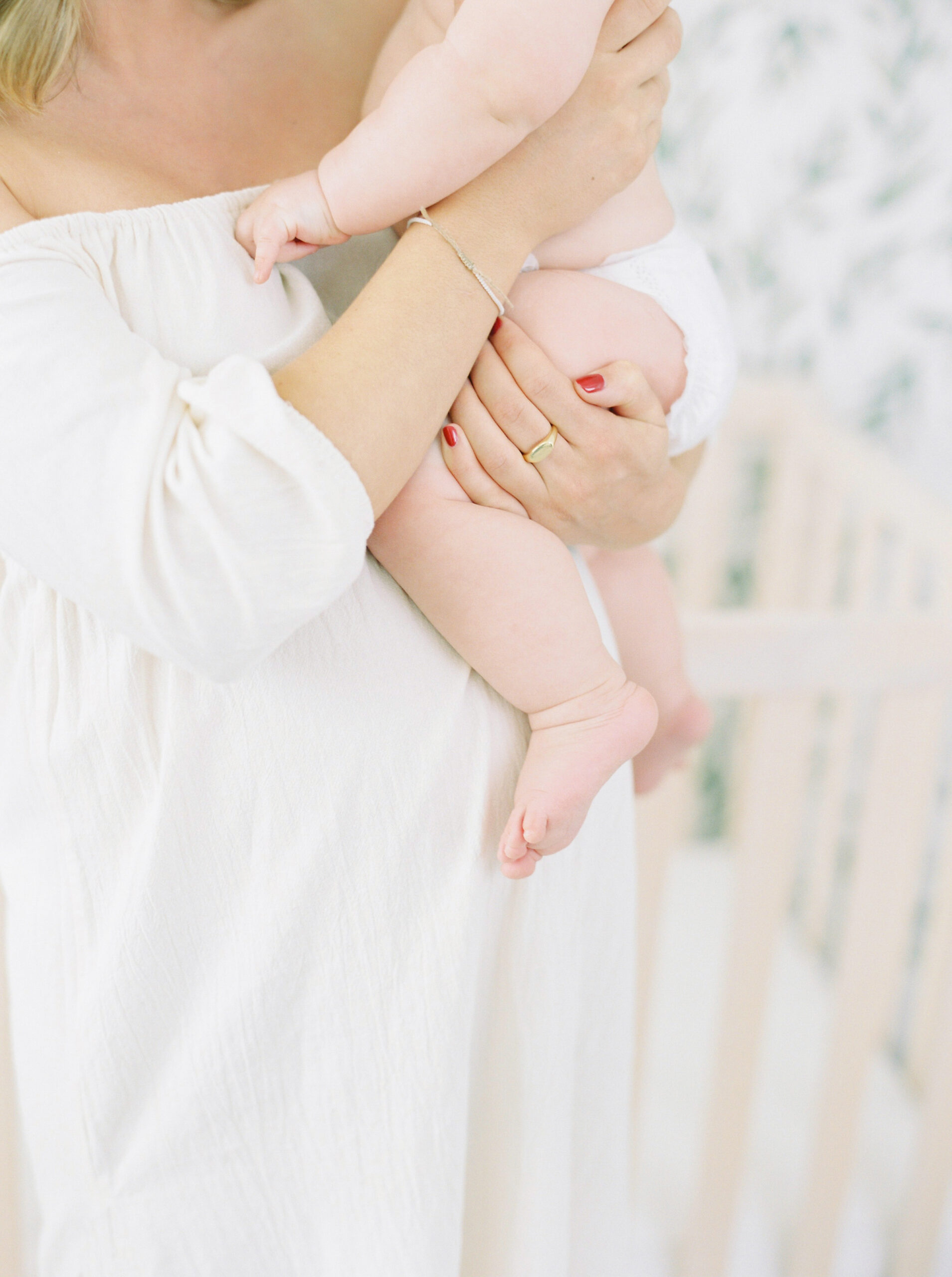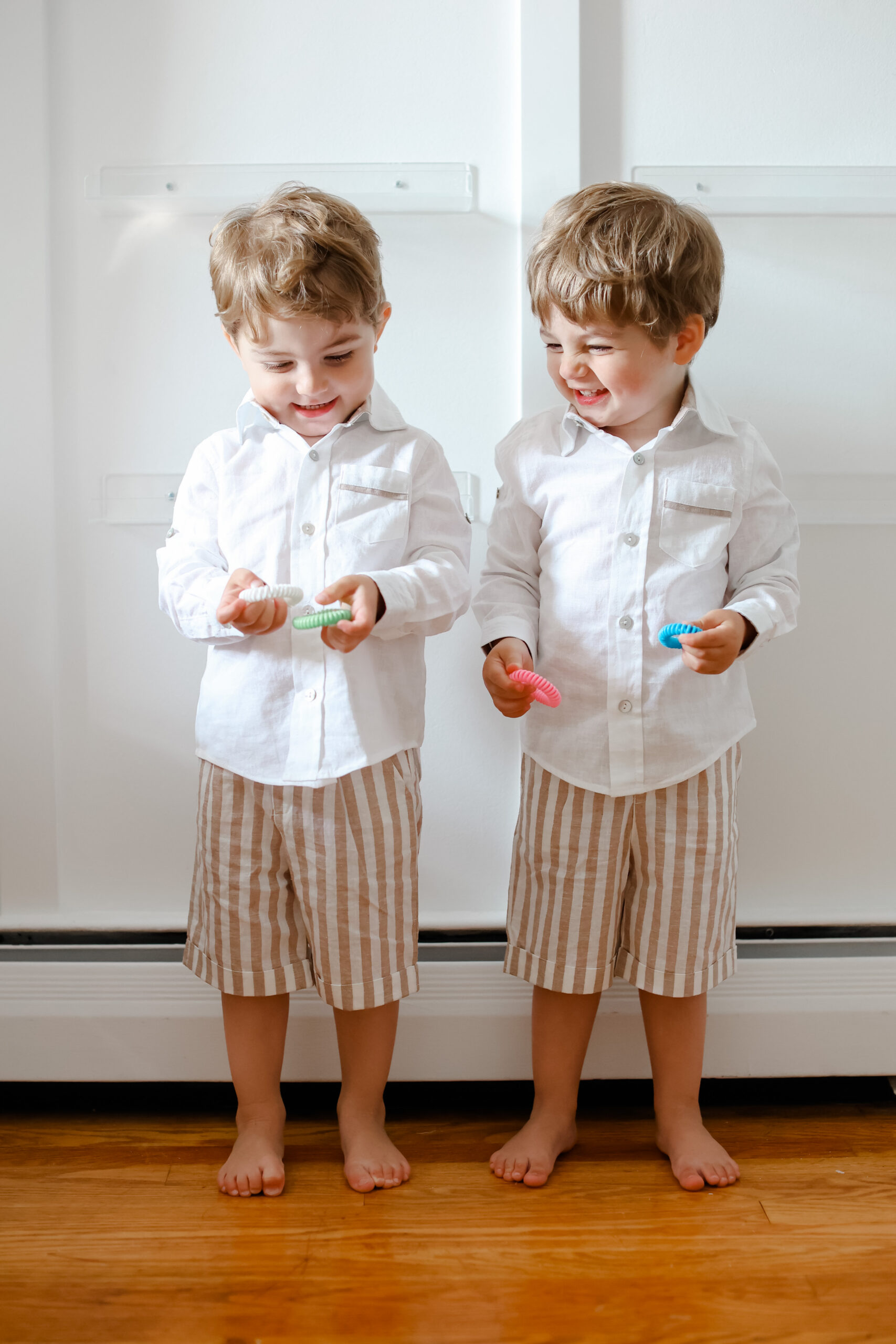Chances are you are reading this because your baby might need a baby helmet or you have noticed a flat spot on his or her head. I was in the same position as you and I am here to tell you – don’t worry, it will all be okay!
One of my twins had to wear a baby helmet due to brachycephaly, which is the type of flat head that he was diagnosed with. His treatment lasted only two months and the transformation was unbelievable. Keep reading to find out our journey and how it can help you!
I hope you found this useful and if you have any additional questions or would like to share your helmet journey, be sure to leave a comment!
In this baby helmet journey, we are covering the following topics. Feel free to use the links below to navigate the post.
What is a Baby Helmet?
A baby helmet is a way to help correct your baby’s skull by redirecting growth. Each helmet is custom fit by a cranial specialist based on your baby’s head and growth needs.
There are three main types of baby flat heads:
- Brachycephaly (this is the type of flat head my son had)
- Asymmetrical Brachycephaly
- Plagiocephaly
- Scaphocephaly
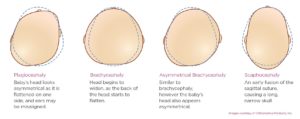
How to know if my baby will need a Helmet?
We noticed that one of the twins head was looking very flat when he was very young. We brought it up to our pediatrician and she kept an eye on it. She told us that we must increase tummy time and do anything possible to avoid him being on his back. At four months we decided to go for a helmet consultation. For us personally, we felt like his head shape was not getting any better, it was actually getting worse. As a result, we decided to call Short Hills Cranial Center.
Why are Baby Helmets more common now?
As noted in Kids Health, in response to evidence that stomach sleeping might contribute to SIDS, the American Academy of Pediatrics (AAP) created its “Back to Sleep” campaign, which recommended that all healthy infants younger than 1 year of age be placed on their backs to sleep.
Babies should be placed on their backs until 12 months of age. Older infants may not stay on their backs all night long, and that’s OK. Once babies consistently roll over from front to back and back to front, it’s fine for them to be in the sleep position they choose.
I also asked the cranial specialist about this as well and he told me twins have a much higher chance for flat head. The reason for that is due to the way they are positioned in the womb. There is very limited room in there so that may be the cause.
What can I do to avoid the Baby Helmet?
I was googling every day ‘how to fix baby’s flat head without helmet’ and would always come to one answer – tummy time. Increasing tummy time is the best advice I often saw and received! Our pediatrician constantly told us to increase tummy time. If your baby doesn’t tolerate tummy time, try to put them on your chest if you are laying down or reclined. For day naps, try to have the baby nap on his side and alternate between the sides each nap.
Try to limit the time spent in swings, bouncers, car seats and strollers. You pediatrician can give you more recommendations, just ask next time you see them.
That being said, we truly tried to do all the things that were suggested to us and unfortunately, we saw no difference. So we decided to go in for a consultation!
What is the diagnosis process?
We went to Short Hills Cranial Center. The consultation was quick, easy and free. The cranial specialist take a scan of the baby’s head using the STARscanner and from that they will be able to provide a diagnosis.
Before the doctor took any measurements, he told me he would like the percentage of the cephalic ratio to be under 95-96%. Cephalic ratio is the measurement used to categorize your baby’s head shape. The cephalic ratio is the width of the head divided by the length of the head multiplied by 100 and reported as a percentage.
Johnny’s head measured at 100%, so as a result we knew we had to proceed with the helmet treatment. The doctor also officially diagnosed him with brachycephaly, which is the type of flat head that he had. We actually brought James with us the following appointment to ensure he didn’t need a helmet as well. His cephalic ratio was 86%, so it was clear he didn’t need one.
Can I design my own Baby Helmet?
One of my most asked questions about the baby head shaping helmet is the design. I was set on a white helmet. I was going to just use stickers and decals to decorate it.
Starband Helmets have a few different options to choose from. My husband and I decided to go with a construction site design. We thought it was cute since his head was undergoing treatment and we didn’t have to spend any additional money designing it. So be sure to ask if your helmet can come already designed!
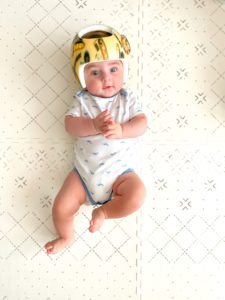
How long is the treatment process?
The average treatment process is approximately 3-6 months but this may vary by patient and by age. The treatment is most effective between 4-7 months and as a result may contribute to a much shorter treatment.
Short Hills Cranial Center mentions, between 4 and 7 months of age, the head grows about 1 cm per month, and this rapid growth can be harnessed within the orthosis to produce rapid change in the desired direction of growth. After 8 months, the rate is decreased to 0.5 cm per month.
I knew that the earlier I go in for a consultation and the earlier he gets the helmet, the shorter and faster the treatment will be! Our first consultation was on August 5th and that was when we ordered the helmet. Johny started wearing the helmet on August 23rd, exactly when he was 5 months.
We took the treatment very seriously and wore the helmet the recommended time, which is 23 hours a day. As a result, Johnny wore the helmet for only 2 months!
What is the adjustment period?
So lets be honest, I think I had a harder adjustment period then the baby. For the first four days, the doctor will provide you with the appropriate time for the helmet to be on and off, so the baby gets adjusted to it.
After the 5 days, the helmet is required to be worn 23 hours a day. It must be taken off during bath time.
Johnny did great adjusting to it, it honestly didn’t even seem to bother him. He did sweat more than usual at first but the doctor reassured me it will get better and it did. His sleep was impacted at first but then he got used to it and it got better.
How do I clean the Helmet?
The baby helmet can be cleaned with 78-99% rubbing alcohol. Wet a soft cloth with the alcohol and vigorously wipe out the entire inside of the orthosis once a day when you remove the orthosis for your baby’s bath. This will help prevent bacteria from building up on the inner liner and will reduce the odor that is sometimes present. Make sure the alcohol is completely dry before placing the orthosis back on the baby’s head.
One thing you wish you knew about the baby Helmet Treatment!
Let me telling you something you need to know, it is not your fault that your baby needs or might need a helmet!! You did absolutely nothing wrong!
I’ll be honest, at first I felt very guilty about my son needing a helmet. I kept thinking ‘why didn’t I do more tummy time’, ‘what did I do to cause this’, ‘how to fix baby’s flat head without helmet’? In reality I did nothing wrong.
Some babies prefer to be on their back no matter which way you try to position them, no matter how much tummy time you try to do, no matter what therapy you try to use.
I also read about the consequences of not treating a flat head. One thing mentioned was that sports helmets may not fit him correctly and I do not want to be the reason why he is not able to play a certain sport later in his life.
Remember, this is a cosmetic fix, this does not affect the baby developmentally. I know giving him the treatment when he is a baby and actually going through the treatment will eliminate any future mom regrets. The last thing I want to do is feel guilty for not doing anything about it.
Plus, they look so cute in helmets! It is actually so adorable on them. Here’s a picture of the day Johnny officially graduated from the Helmet Life!
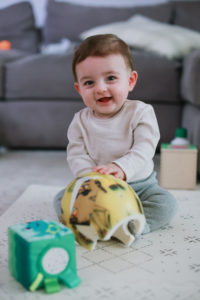
Our Before & After Baby Helmet Treatment
Johnny’s officially graduated his helmet treatment on October 18th! His transformation was absolutely amazing and the results were incredible!
His head growth was redirected exactly where the doctor wanted! The cephalic ration went from 100% to 96% at his one month follow up and to 93% on the day of his graduation!
The best part is that the treatment works. It made a visible difference in my sons head shape and we will forever be grateful that we were able to do something about it!
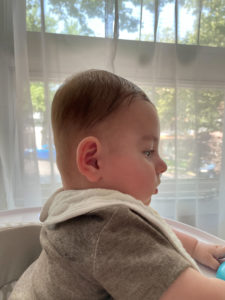
Before

After
I hope this has given you the peace of mind you needed and remember it is not your fault! Your baby will do great.
